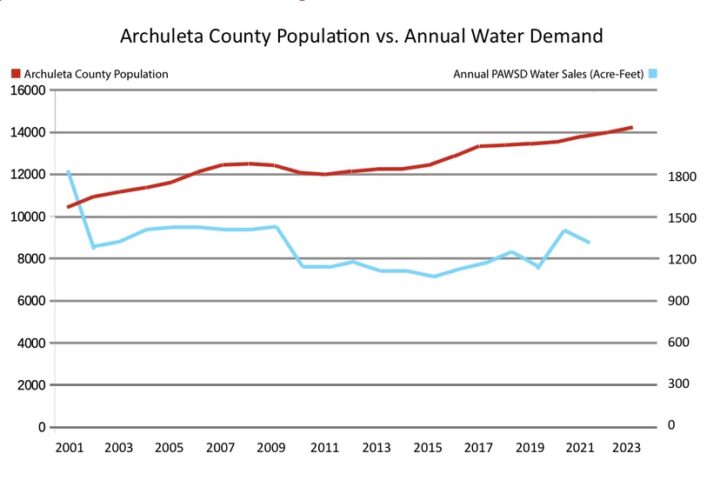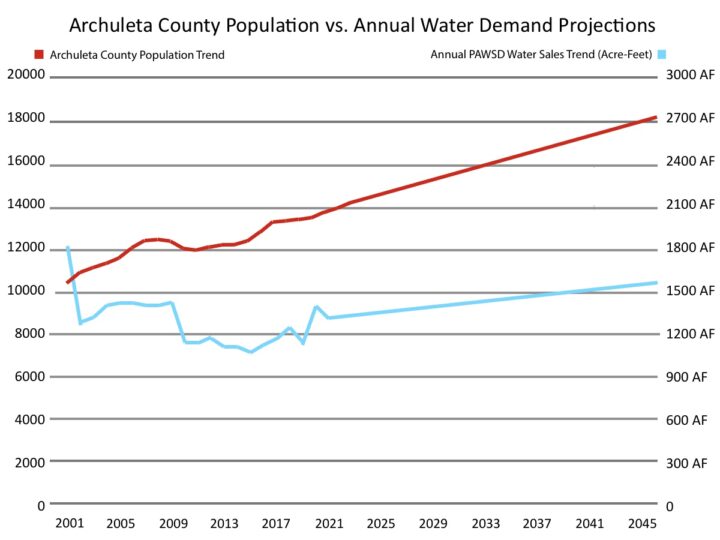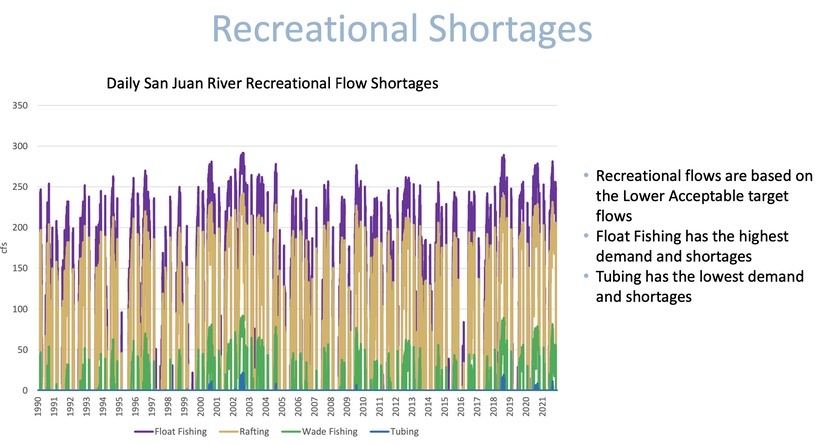Back in about 2009, when many citizens were criticizing Pagosa Area Water and Sanitation District (PAWSD) for its purchase of the $10 million Running Iron Ranch, and making existing customers pay for the purchase… for a future reservoir that the taxpayers had never approved… one of the PAWSD Board members defended the property purchase.
“What if you turned on the tap, and no water came out?”
Fifteen years later, the reservoir is no closer to being built. Nevertheless, while making my morning coffee, I was able to turn on the tap, and water came out.
In my humble opinion, planning for the future is not something governments ought to spend a great deal of time on. I think it’s fine for families and businesses and corporations to plan for the future, because a family or business is in it for the long haul, and has the ability to make sensible long range investments.
Representatives serving in government need to be very careful with long range planning. For a couple of reasons.
Governments typically change every two years, during elections, and often change even more dramatically every four years. The Pagosa Area Water and Sanitation District could be taken as an example. The majority of the current Board have served less than three years. The District has had four different District Managers in the past 12 years.
A similar situation is found at the San Juan Water Conservancy District (SJWCD). Only one of the seven board members has been in their seat on the Board for longer than 4 years. But this relatively inexperienced Board has been stuck with a plan for a reservoir… dating back to 2011, and earlier.
The current SJWCD Board did not create the plan they are trying to follow, nor do they have a deep understanding about why this particular plan exists. The plan calls for an 11,000 acre-foot reservoir, but does not indicate who the reservoir will benefit nor who will end up paying for it. In other words, it’s not a good plan.
To try and gain some understanding of the plan, a previous Board hired an engineering firm — the Wilson Water Group — to calculate the community’s future water needs, and determine whether an 11,000 acre-foot reservoir made sense. The report contained highly imaginative data that bore little relationship to the needs of most Pagosa Springs taxpayers… but the previous SJWCD Board embraced the report anyway, and concluded (from the imaginative data) that our community desperately needs an 11,000 acre-foot reservoir.
Disclosure: I currently serve as a volunteer on the Pagosa Area Water and Sanitation District (PAWSD) Board of Directors, but this editorial reflects only my own personal opinions and not necessarily the opinions of the PAWSD Board as a whole.
I shared some less imaginative data in Part Seven, yesterday… specifically, a graph showing 40% growth of Archuleta County’s population, and a water demand that remains significantly lower than in 2001.

This lack of correlation between population and water demand was completely ignored in the Wilson Water Group report (which you can download here.). Instead, the Wilson Water Group assumed a direct correlation between population growth and water demand growth — the kind of correlation that obviously doesn’t exist in our community.
I pointed out this glaring error, to the Wilson Water Group and to the SJWCD Board. Neither group wanted to acknowledge the obvious error.
If the Wilson Water Group had accessed, and used, historical PAWSD data, and if they had used that data to create trend lines, they would have seen that in the year 2045, Archuleta County will likely have a population of about 18,000 people and PAWSD will likely be selling less water than it did in 2001. We’re simply a more water-conscious community than we were then.

Unfortunately for Archuleta County taxpayers, the previous SJWCD Board did not want accurate data. They wanted a report that would justify the plan they were going to pass on to the next board — for an 11,000 acre-foot reservoir.
But even with highly imaginative PAWSD projections, Wilson Water Group could not justify an 11,000 acre-foot reservoir based just on PAWSD drinking water demand.
Recreation and tourism to the rescue!
Here’s how you can create the illusion of a serious water shortage, when no water shortage exists. You claim that, for most of the year, the San Juan River is not deep enough (or exciting enough) for rafting, float fishing, wade fishing and tubing. These shortages could be mitigated by water releases from a $100 million reservoir.

I asked Erin Wilson how many days of increased river flow could be generated by an 11,000 acre-foot municipal reservoir, assuming you wanted to completely empty the reservoir every summer by adding 500 CFS to the San Juan River, to make rafting and fishing more fun.
She did a quick calculation.
11 days.
This is the plan that the current SJWCD Board inherited. Speaking as a taxpayer who’s been writing about Colorado water issues for the past 20 years, I have a hard time imagining who, exactly, would want to fork out $100 million to ensure that tubers can experience a more challenging trip down the San Juan River for 11 days in the middle of summer.
Who might that be? I have no idea.
The current SJWCD Board doesn’t know either. But they have a plan to follow, and over $100,000 a year in tax revenues to spend, following the plan.
We can’t blame the Wilson Water Group. They competently provided the report that the previous SJWCD Board wanted to see.
And we can’t blame the current SJWCD Board, because they inherited a government plan, and they’re trying their best to follow it.
I accept the fact that the climate is going to change.
What doesn’t seem likely to change is government waste.

